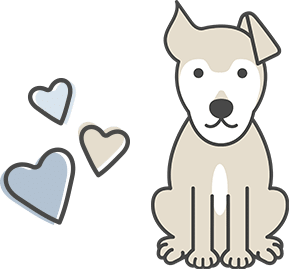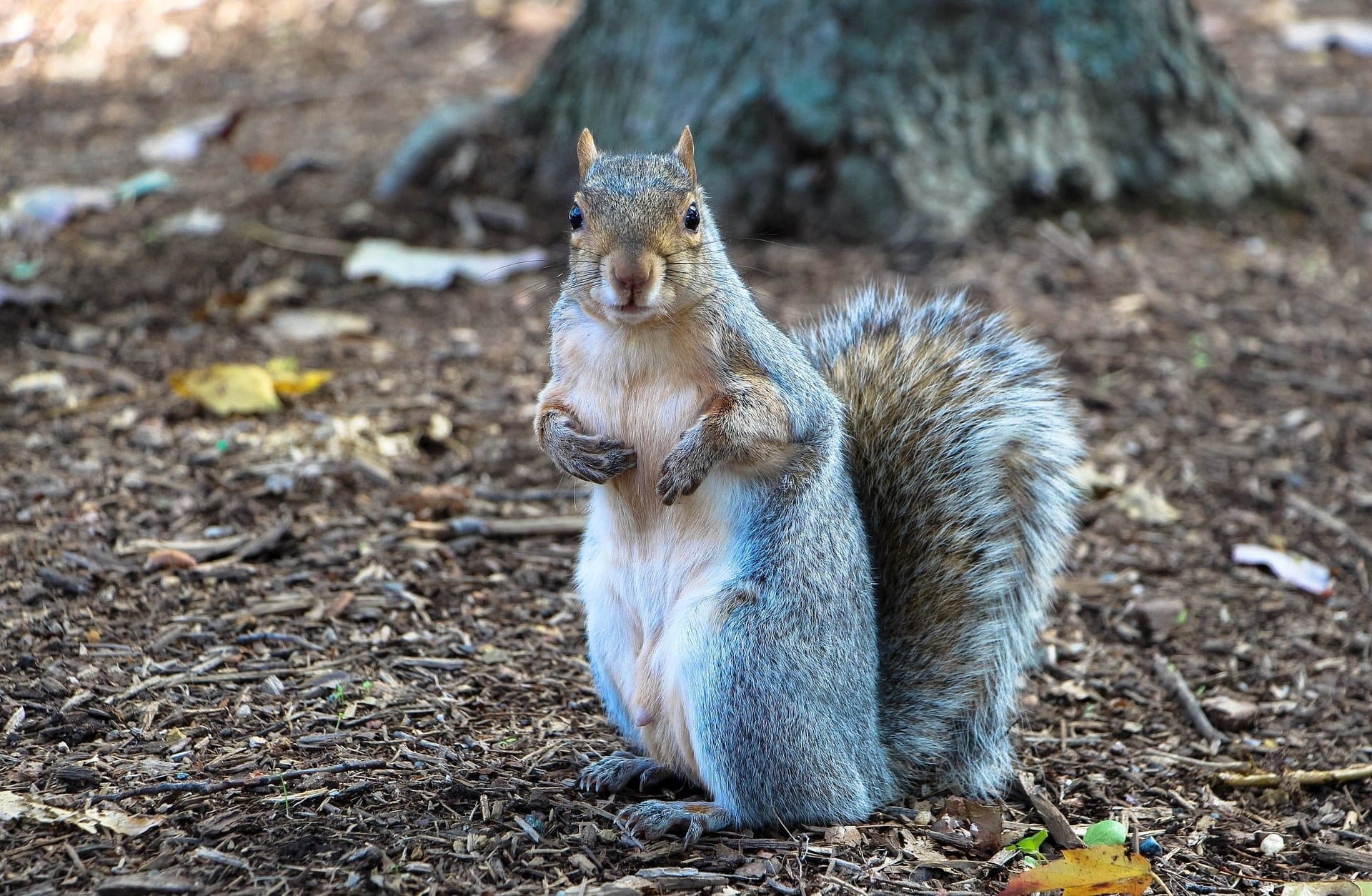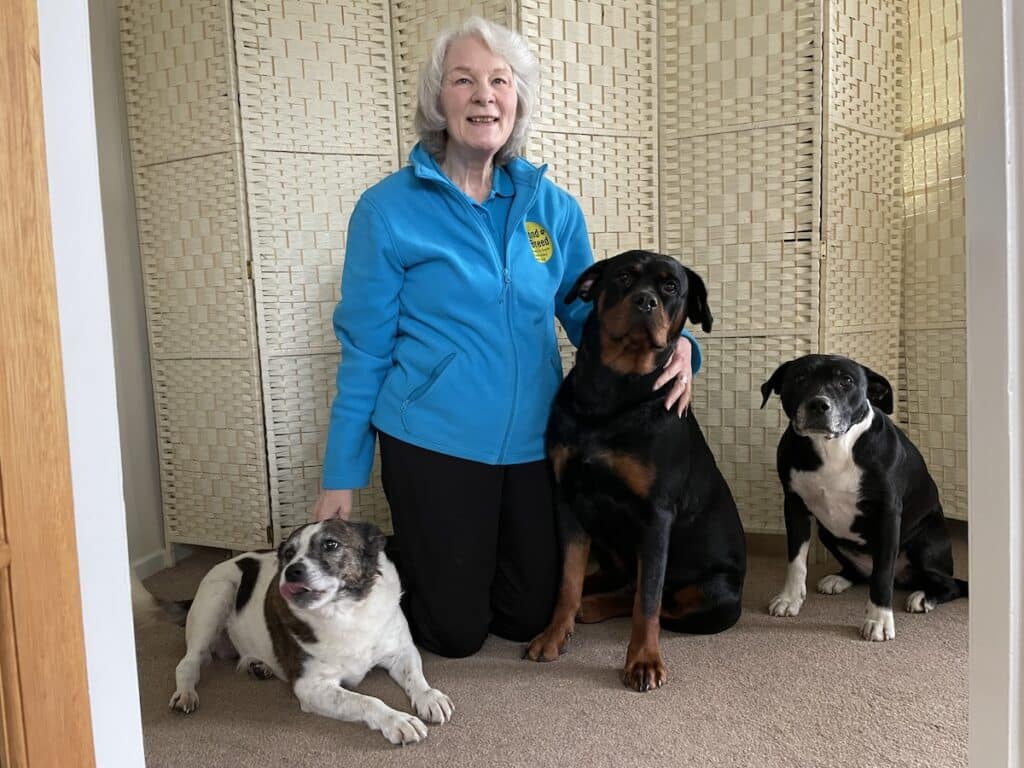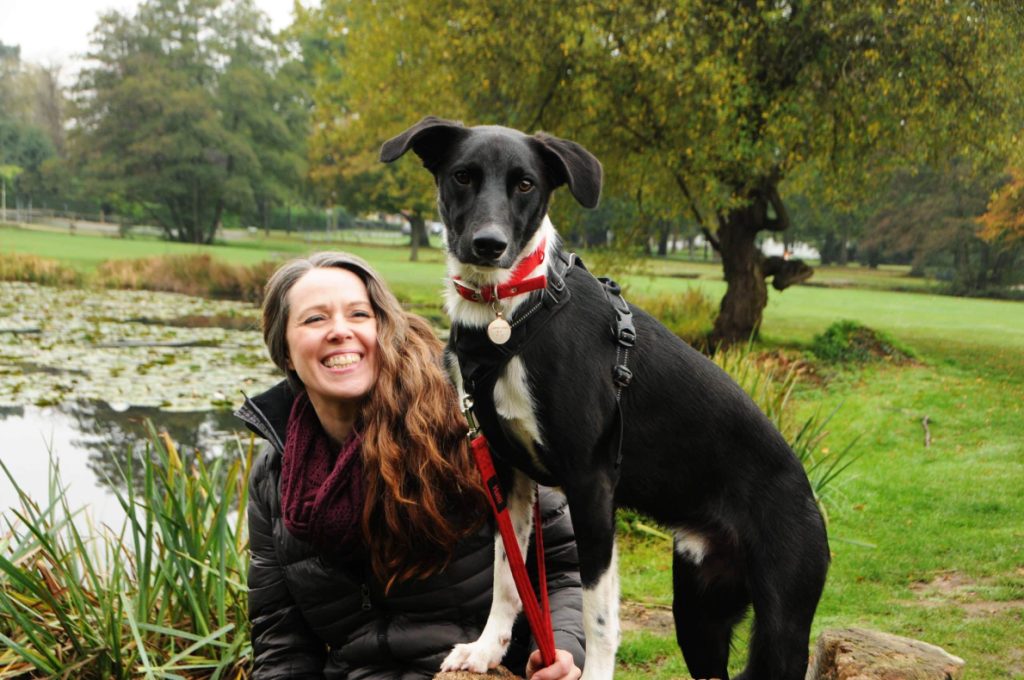Does your dog love chasing squirrels?
As a terrier mum I have spent many a walk holding a lead and yelling my dog’s name at the top of my lungs.
It’s something many owners of dogs with prey instincts can relate to and it can be a nightmare.
You worry they may get lost, injured, run over, even shot by a farmer.
With Daisy, I adopted her when she was five, and thought it was something I could never change.
I’d try take her to places where I didn’t think there’d be squirrels, prepared with her ball and treats just in case she took off.
Oh, how stupid I was! But I know chasing squirrels gave her many happy times. Me, less so as a frantic dog mum.
Fast forward to today and, knowing a little more, when I adopted Patch I wanted to try to teach a strong recall.
We’re working with Sue McCabe from Muttamorphosis, a behaviourist of 20 years and owner of Border Collie Guinness and Jack Russell Jellybean.
I’ve seen his ‘stop’ and recall first hand and it is awe inspiring.
So to mark Squirrel Appreciation Day on January 21st, I spoke to her about her tips for dogs who love to chase.
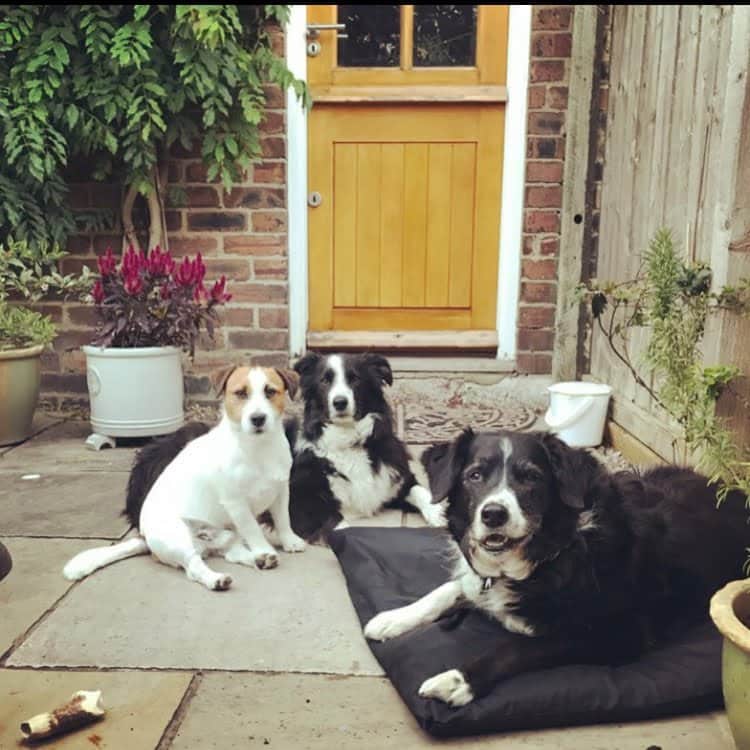
Why do dogs love chasing squirrels?
First of all, not all dogs have a chase instinct but those who do tend to get massive feel good chemicals when they chase.
So the breed might dictate that they are chasers, it might be in their genetic make up to chase, chase, chase.
It’s important to remember that chasing is a self rewarding behaviour, so the dog is doing something that is highly rewarding.
The more they get to do it, the more of a thrill the get and the more they want that again and again.
As a trainer is this something you see a lot?
I do get clients who are struggling to control their dog’s prey drive which is chasing anything really.
That could be squirrels, sheep, or in some cases deer. Small furries, and birds would probably be the most common animals in terms of wildlife that gets chased and cats as well, obviously.
Pet parents who contact me often want to integrate a dog into the family with cats or have a lot of cats on the street.
So, it’s causing a little bit of a nightmare as they’re trying to walk their dog on a day to day basis.
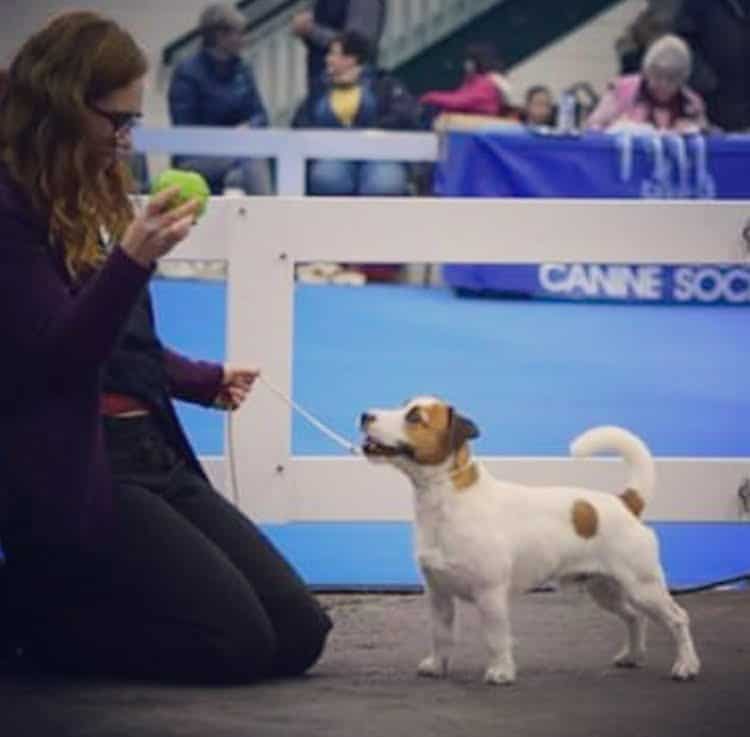
What tips would you give owners with dogs predisposed to chasing?
It’s very important early on to make sure your dog doesn’t get the opportunity to take part in the behaviour that you essentially don’t want to become a habit.
Every time your dog gets to chase, they’re getting better and better and better at chasing.
So putting some management steps in place early on to make sure that the dog doesn’t get to practice chase behaviours, especially with little puppies, would be very, very important.
For example with Jelly Bean, I made sure whenever I was in areas where there might be rabbits that they were very high interactive areas for him and I when he was a young pup.
The favourite toy would be taken out and he would be played with around the smell of rabbit droppings, rabbit dens, rabbit warrens.
Very high value food and high value toys would be played with very intensely with him around those areas.
So, as a young puppy, his associations never became, ‘When I smell rabbits I look for rabbits to chase.’
It was, ‘When I smell rabbits I look for Mum to entertain and play with me.’
For young puppies, that’s a really great start.
And if you have an older dog?
If the chase instinct is practiced and well built in his repertoire of behaviours, management is going to have to be your biggest help.
By this, I simply mean keeping him on long lines or on a leash in those areas.
While training in other situations, aim for a really, really strong response to a ‘Stop’ signal or a recall signal.
You could then start to put those signals into place in areas where you might encounter prey that he would be inclined to chase.
Should people allow dogs to play with squirrels?
No, for the sake of livestock, I don’t think your dog should be allowed to chase anything.
The only things that I allow my dogs to chase would be inanimate objects like toys that I play with them with.
A lot of pet parents I see would have cats. I have four cats myself, some of whom are quite elderly, so even as young puppies I don’t allow my dogs to play with my cats.
I don’t think cats should be a plaything even if the cats are willing to play.
If I allow my dogs to practice playing with my cats in the house, and they get a thrill from it, I can’t expect them not to try and replicate that thrill when we’re on a walk.
So I never want them to see other animals as a source of crazy fun.
What if dogs react to the smell of a squirrel, cat or rabbit?
If it is with the smell, it’s very difficult to retrain your dog to do anything if the stimulus is out of control.
If you have friends who have rabbits, I would be finding ways to get the smell of rabbits from of your friends and start to incorporate that into your play with your dogs at home.
Literally get the scent from the hutch, maybe their straw perhaps, and take it home to practice.
But only if you’ve got really strong play behaviours with your dog already.
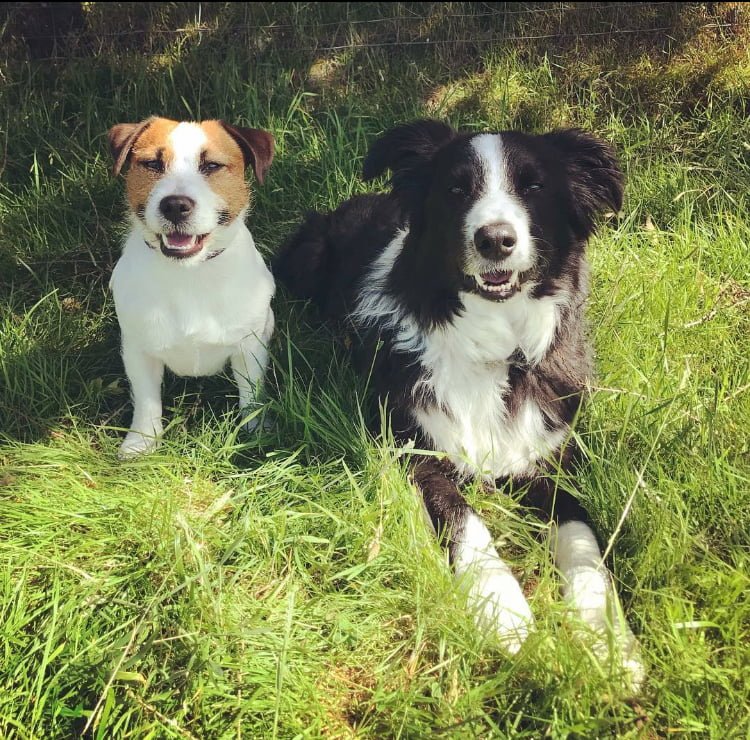
One of our readers Kerry from Fur and Fables has this issue with FIVE whippets. Can you help?
Kerry will have to train every single dog separately. Then buddy up one dog. Then buddy up two. Then buddy up three. Then buddy up four. And then buddy up five.
And go right back to training every time you buddy up. So, you’ve got a hell of a challenge ahead unfortunately.
It’s a great question, Kerry. I didn’t start by letting my dog loose amongst rabbits and teaching them a stop command.
If you can’t teach your dog a stop when they are running towards a family member to say hello, you haven’t got a hope in hell of stopping them when they’re running towards a rabbit running away from them.
So I would always suggest that you start teaching the ‘Stop’ command with things like dead balls.
Can you describe the Stop command?
Yes, having the dog on a lead, I will throw the ball, the dog naturally runs to get the ball, so you always start at a very close distance.
I might start by dropping the ball in front of my dog. And then I will feed the dog a high value treat for taking his attention away from the ball.
When I can get to the stage where if I drop the ball, my dog will immediately turn his attention back to me for food, I know I’m on the right track to being able to add a verbal cue to not run after that ball.
With a tiny puppy I might put my hands around the chest to restrain him very gently, and roll a ball away.
And when I feel the dog release any sort of tension to get to that ball, I’ll feed the dog and reward the dog until I can put that on verbal cue.
I’ll start with things like food, and toys being rolled away. I might then add toys thrown at a higher velocity or speed.
The toy is dead, by a dead toy I mean the toy has landed and is dead, it’s not moving.
And then I will move up to being able to stop my dog while the toy is still moving.
If you can’t call your dog off the ball, you really haven’t got a hope in hell of calling your dog off live game.
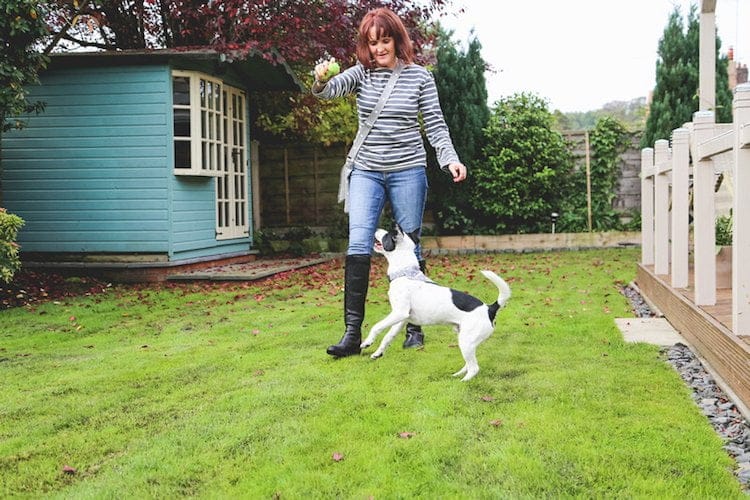
What if a dog isn’t toy motivated?
You can use food. Roll food along the floor. Apart from tug, I have yet to find any game where I cannot replicate the toy with food.
You can toss, roll, hide, throw food in the air.
In theory, you should be able to tie food at the end of a flirt pole, just like you might be able to tie a ragger at the end of a flirt pole for dogs who aren’t food motivated.
In most cases the games I play, you could replicate food for toys or toys for food fairly easily.
Is there any food you would recommend?
Use your imagination. Always start rewarding with a higher value treat, like cheese, sausage, chicken or liver cake.
But as I say to people in my classes, eventually your dog will have to learn that what you’re offering from your pocket is as good as chasing a rabbit.
It is very doable but takes time and patience.
When it comes to training, what would you say is the biggest myth or misconception?
With my own dogs, I got, ‘You cannot train a terrier to,’ and you could fill in the gap.
I think if you start early enough it’s possible to train any dog to do most things; or not to do most of the annoying things that pet parents get in touch with me about.
You need to be consistent and make sure that you always have management steps in place to stop the behaviours being practiced.
I never had any expectation for my terrier that I didn’t have for my other dogs. I didn’t make excuses that he couldn’t do A, B, and C because he was a terrier.
I made sure that I had the same expectations and rules for him, and taught him exactly the same things in exactly the same way.
Yes, the motivation might have been different, but certainly my training didn’t need any level of intensity.
People say it’s very hard to train a terrier. My experience certainly is that that’s not the case.
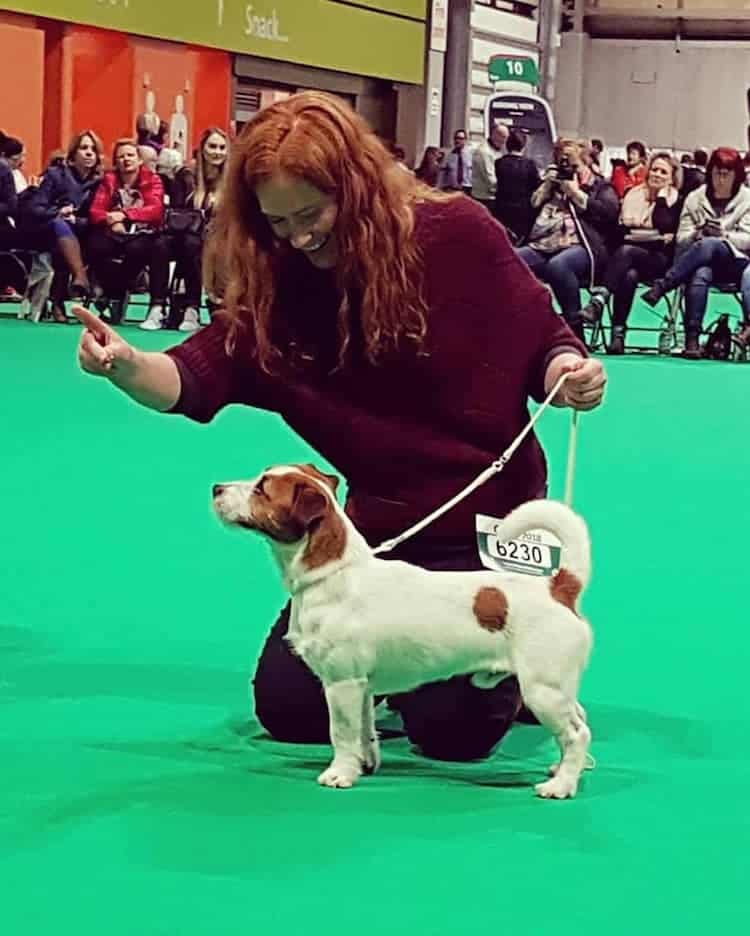
And what about older dogs and rescue dogs?
With rescue dogs, it’s possibly easier because you have totally changed the context if you have taken on a rescue dog.
You can always explain to a dog through training that the new environment that you have brought them into has a different level of expectation and a different result than in the previous environments they were in.
So for example, if I took on a new rescue dog, and I have many, many, many times, you need to think of them almost as a blank slate.
If you know there are areas where there are squirrels, certainly, I would not be doing into those areas with my new rescue dog, unless I had done a huge amount of foundation training with them in other less distracting areas.
We always try and start training with dogs when they are not highly aroused or over stimulated by their environment.
That applies to squirrels, rabbits, traffic, toddlers, picnics or anything.
Then I bring my dogs to areas with lower levels of distraction, repeat the training.
Then medium levels of distraction, repeat the training, and finally high levels of distraction, and repeat the training.
But there may always be cases with a dog who has a very strong history of chasing, there may always be locations where that dog needs to be on a lead.
Can you share an example of something amazing you’ve trained Jellybean to do?
I would say stopping on the chase. And if he does start to chase something I have a very, very strong freeze cue that I give all my dogs.
It’s an Emergency Stop. Stop whatever you’re doing and drop to the floor.
We did have one incident recently where my Border Collie, who has the strongest prey drive of my three, went after a rabbit.
Jelly ran after the Collie and then spotted the rabbit, and recalled off that.
And I was so thrilled that I was jumping up and down, whooping and hollering, and generally making a fool of myself.
Because that’s the first time I’ve actually experienced him chasing something and me being able to call him off that chase.
It’s very rare for him to chase. It was the collie, but I did immediately recall him from that chase. That wouldn’t be my instinctive response.
Typically if my dogs are running after something, I find it easier to stop them than recall them, but in that instance, the recall did work. Which was very exciting to me.
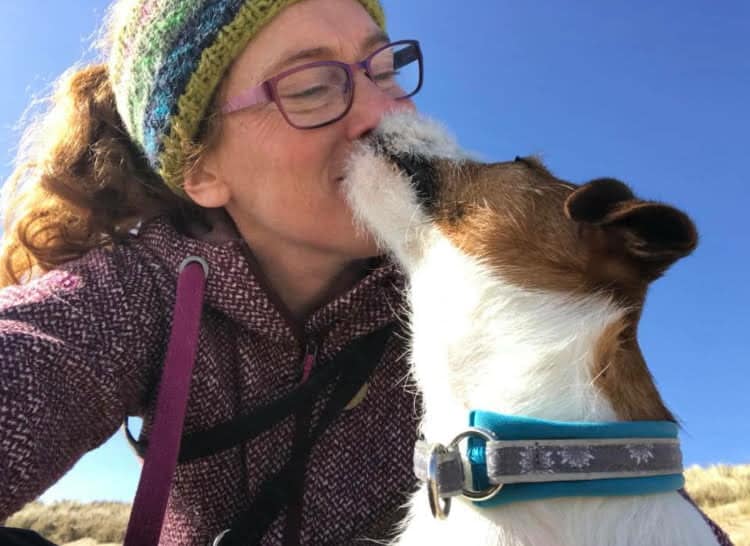
If people are worried about their dog chasing things, what’s your advice?
Try to find places you can go and really enjoy a dog walk without worrying about whatever it is that your dog is chasing.
It’s very important that it doesn’t become a cycle of, ‘Oh, we have to take the dog out again,’ where you dread the walk.
You’re going to end up with frustrated humans and frustrated dog.
Find places where your dog is either not seeing the temptation at all or the stimulus is so far away that the dog is seeing it at a distance where you’re still feeling that you’re getting some level of response from the dog.
I’m working with a beautiful dog at the moment who is very, very bird chasey, and I go places to train where the dog is seeing the birds, but at a really great distance.
So for example, along the shoreline of the beach with the tide out, she will still see plenty of birds up in the dunes, but we’re seeing less birds down at the shoreline.
If I walk with her and we’re in the middle of a field, yes, she will see some birds around the hedge rows, but certainly less birds walking in the middle of the field.
Find places where you’re literally not waving the candy in front of the baby and expecting the baby not to get over excited is a really good way to enjoy your walks.
I’ve learned the power of play with Patch, can you explain this?
You can always improve your relationship with a chasing dog by improving your play with that dog, and I can’t stress that enough.
One of the things I do so much with my young dog with is play and I love doing it.
But I understand that some pet parents would find this hard work so if you just want to go for a walk with the dog and not worry, there are some breeds that might be easier to do that with.
Terriers and chasing breeds wouldn’t be that breed.
I love, love, love interacting with my dogs when we are walking. So, we talk to each other, we play games, we work on our recall, every single day.
I make sure my dogs know that I’m worth being around, and I’m never a witness to my dog’s fun. I’m always part of my dog’s fun.
And I think that’s a really important thing no matter what breed of dog you own.
If you definitely want to have a dog who sees you as the best fun on the walk, play is probably the greatest gift you and your dog can have together.
That sounds a bit cheesy, but it is the heart of all my training.
Thank you so much Sue. Where can people find more of your tips and advice?
There’s a lot of recall training videos on my Facebook page and Premack videos too.
Premack is the principle that if your dog does something you would like him to do, he gets access to something he would like. (Like saying to a child, ‘eat your broccoli and you get your ice cream)
I think it’s very, very relevant for chasing dogs, because if you can teach your dog to stop when he sees the squirrel, and you then release him to chase that squirrel, the squirrel will be long gone.
He will never catch that squirrel, but he still feels like he’s getting to follow a scent.
Find out more about Sue at www.muttamorphosis.co.uk
Facebook: www.facebook.com/muttamorphosisDogTrainingandBehaviour
Twitter: www.twitter.com/muttamorphosis
If you like reading Sue’s training advice, you might enjoy Training a rescue terrier with Sue McCabe Part 1 or Training a rescue terrier with Sue McCabe Part 2.

